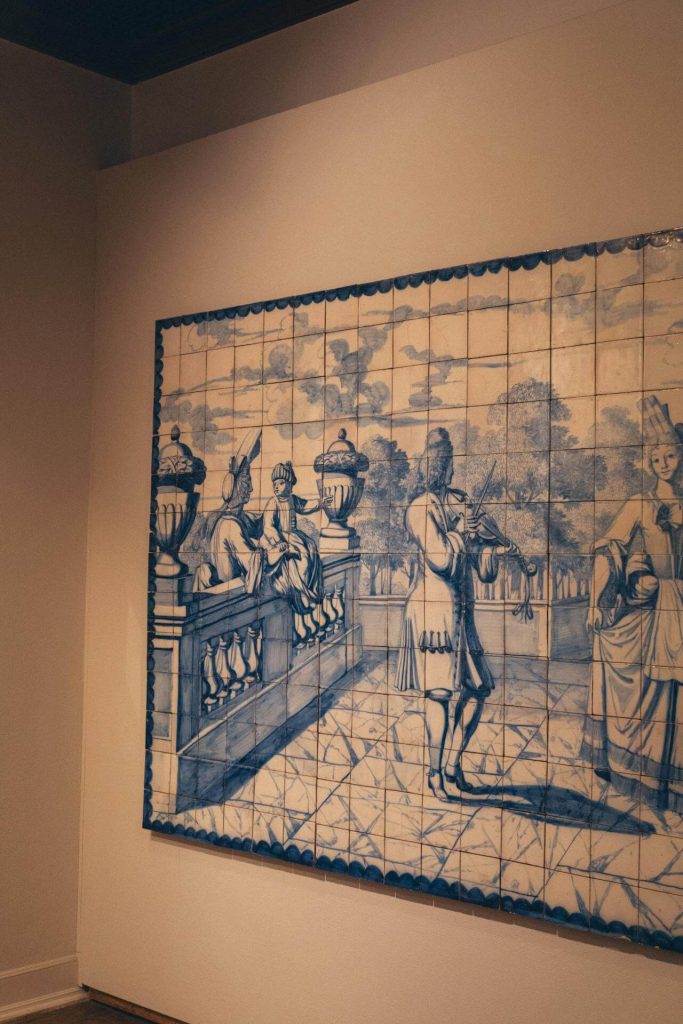National Tile Museum
Updated on
Support my travel guide for free. Use my affiliate links
Same price for you = comission for me. Learn more
Basic info
Type of attraction
Museum
Portuguese name
Museu Nacional do Azulejo
Tab 2 content.
Tab 2 content.
How to visit
Prices
General ticket: 8,00€
Young (13 to 24): 4,00€
Senior (65 and over): 4,00€
Children (under 13): Free
Free access
- Children (under 13)
Opening times
Tuesday to Sunday:
10 am – 1 pm
2 pm – 6 pm
Last admission: 30 min before closing time.
Closing days
Monday
January 1, Easter Sunday, May 1, June 13 & December 25
Location
Rua Madre de Deus, 4 – 1900-312 Lisboa
Public transports
Metro:
Blue Line > Santa Apolónia station
+ Bus 794, 759
Bus:
203, 210, 718, 742, 759 > Ig. Madre Deus / Museu Azulejo (Stop)
34B, 203, 728, 794 > Av. Inf. D. Henrique (Stop)
More details
- Mother of God Church (Igreja de Madre de Deus): adorned in portuguese baroque style. Notable for its gilded carved wood and tile panels. Features a 16th century mannerist cloister and the chapel of St. Anthony is enriched with paintings by André Gonçalves.
- Tiles collection: from the 15th century to nowadays. In a simple manner, the tiles can be categorized as: with patterns, figurative or ornamental.
- Panel of Our Lady of Life (c. 1580): an icon of Portuguese tiles from the 16th century. Attributed to Marçal de Matos. It represents the “Adoration of the Shepherds”.
- Diamond Tip pattern tile panel (1608-1639): an example of mannerist tilework.
- Altar Fronts: inspired by Indian cloths. They reflect the meeting of cultures associated with overseas expansion.
- Panels from the Hunting Room (1670-1680): figurative tiles with scenes alluding to hunting.
- Alegoria da Visão (1700-1730): it depicts a lady looking at the portrait of her beloved and thus evoking some memories of the past.
- Great Panorama of Lisbon: this important tile panel measuring around 23 m in length shows us, in great detail, a city of Lisbon pre-1755 earthquake, from Belém to the other end.
1509 – Foundation of the Madre de Deus Convent by Queen D. Leonor.
1521-57 – Reign of King John III. Extension and improvement works tasked to the architect Diogo de Torralva.
1706-50 – Reign of King John V. Decoration works. Addition of a new sacristy.
1755 – Great Lisbon earthquake.
1750-77 – Reign of King Joseph I. Repair and renovation works. The Rococo altarpiece is added.
1834 – Extinction of Religious Orders.
1896 – Extensive restoration works to install the D. Maria Pia Asylum. Tile panels taken to the site for decorative purposes ended up being stored.
1965 – The Tile Museum, installed in the Convent of Madre de Deus, operates as a dependency of the National Museum of Ancient Art.
1980 – The Tile Museum is officially recognized as a National Museum.
the surroundings
- National Pantheon (1,7 km)
- St. Vicente de Fora Monastery (2 km)
- Fado Museum (2,1 km)
- São Jorge Castle (2,6 km)
- St. Anthony Church (3 km)
- Restaurante do Museu do Azulejo (83 m)
- O Germano (110 m)
- O Caçador de Xabregas (120 m)
- Tribo da Terra (130 m)
- Marítima de Xabregas (350 m)





